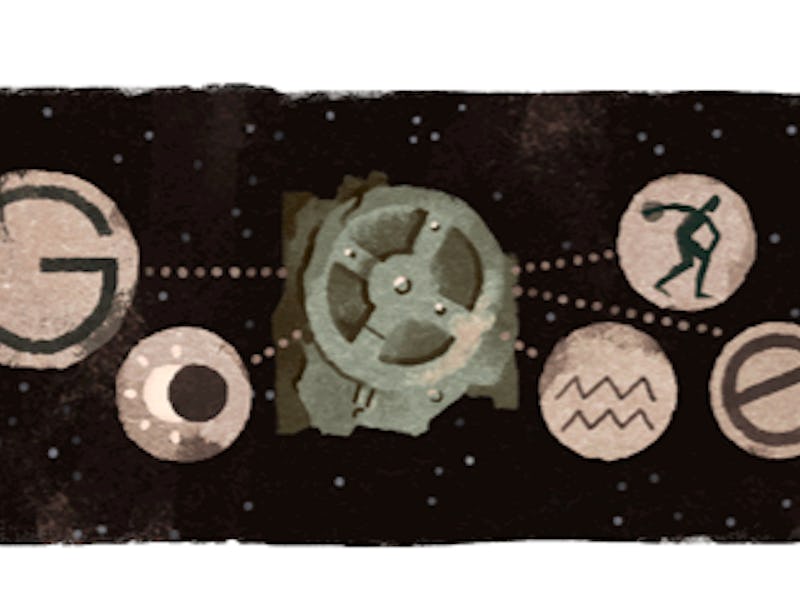
The Ancient Greeks had achievements far beyond their stone tablets and sick beards. The Antikythera Mechanism, celebrated with today’s Google doodle 115 years after its discovery on an island of the same name, is an analog computer built by the Greeks some 2,200 years ago.
With the turn of a crank, the device — originally comprised of about 50 gears — could predict the placement of the sun, moon, and all of the planets that had been discovered by then. It took Copernicus until about 1500 to propose his heliocentric model in which the Earth orbits the Sun, but the Antikythera Mechanism was already predicting the sun’s position, meaning its makers must have had the same idea but much earlier.
May 17, 2017 marks the 115th anniversary of the Antikythera Mechanism's discovery
The original device could have predicted a coming solar eclipse and the moon’s cycles. The earliest date that could be projected on the computer was April 28 in 205 B.C., a date that apparently coincided with a new moon.
With the Antikythera Mechanism, the ancient greeks could predict when celestial bodies would align
In a bizarre testament to its accuracy over time, the ancient computer has been dragged into the dizzying logic of the Flat Earth movement. (How could a flat, circular device track the cosmos unless the Earth was also a flat circle?) But in terms of science, the machine is likely to have inspired the designs of the first mechanical clocks. And with some proposals for NASA rovers to eschew electronics for pneumatic or other mechanical components, we might someday build modern versions of the Antikythera Mechanism and blast them into space.